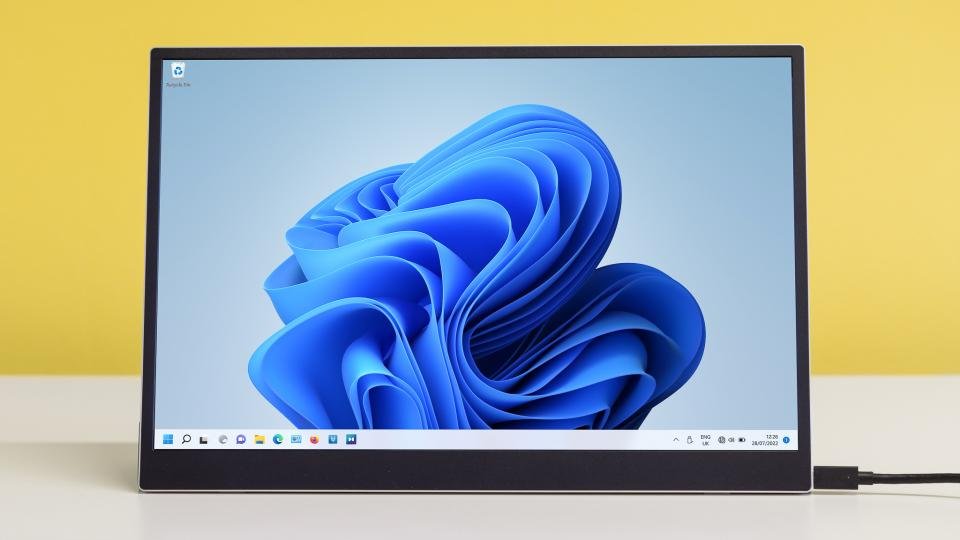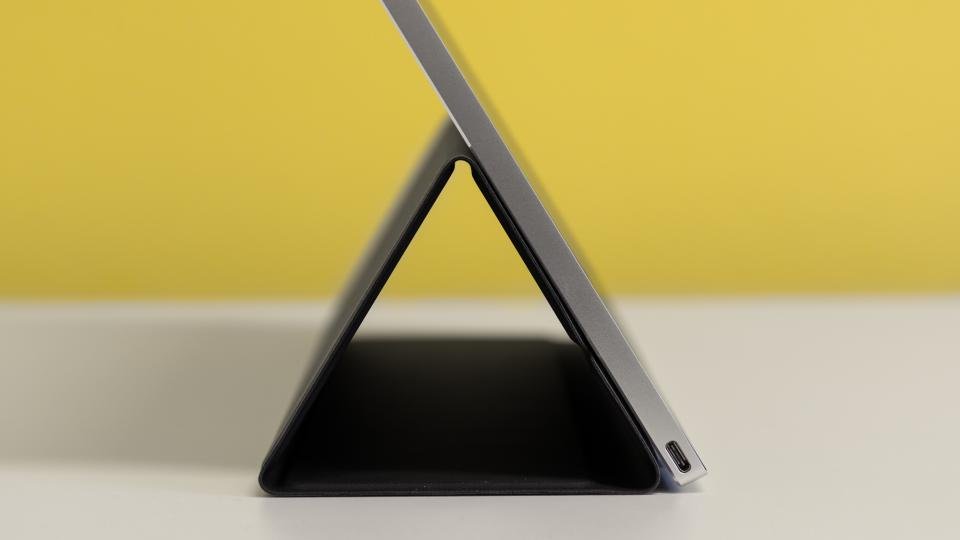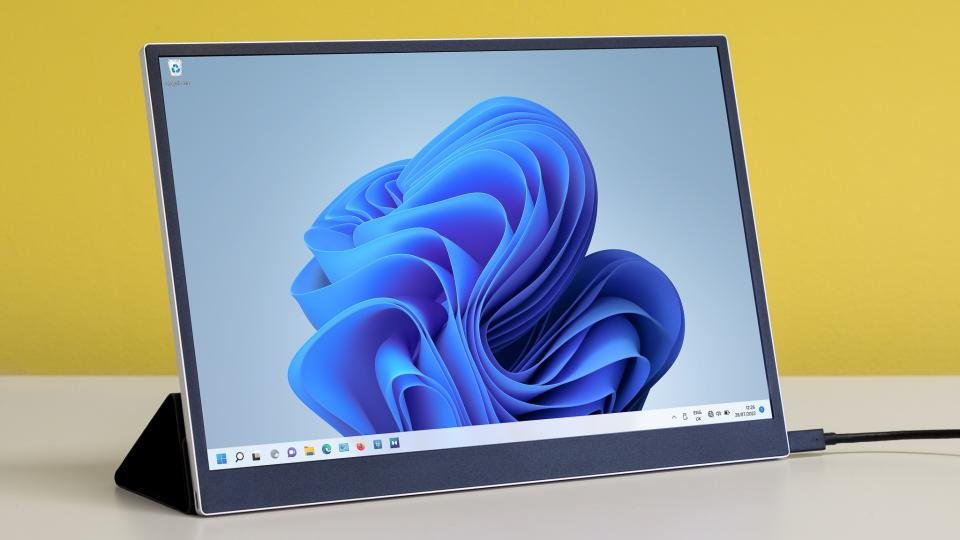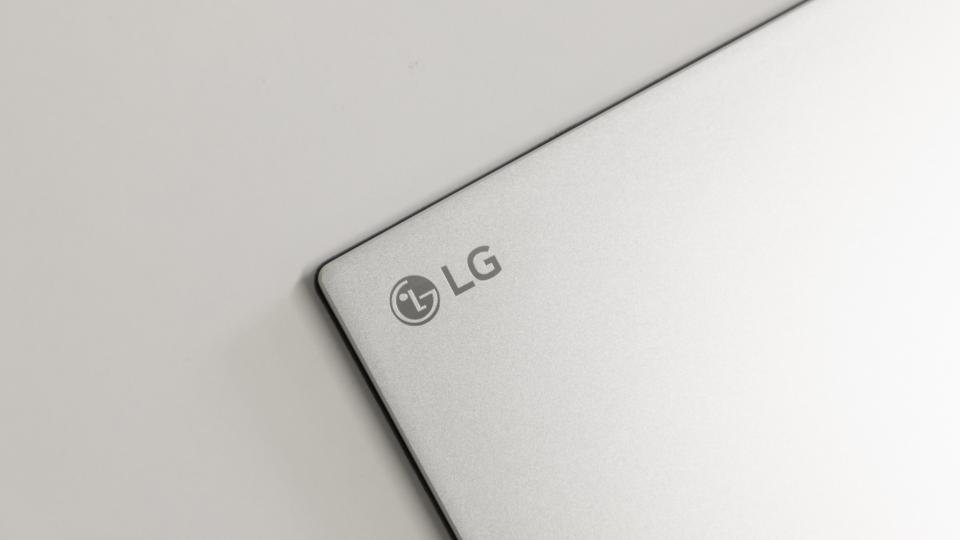
Light, stylish and stunning to behold, the LG Gram Plus View is an excellent portable monitor
Pros Stunning displayGood build qualityEasy to useCons A bit expensive
The LG Gram Plus View (styled “+view”) is a dashingly handsome 16in portable monitor. LG clearly hopes you’ll pair this dinky display with one of its Gram 16 laptops: aside from the obvious similarities in design, the Plus View launched as a freebie that came with both versions of LG’s Gram 16 (2022) (£1,549). Given that the only requirement is a spare USB-C port, though, I wouldn’t let that distract you.
It’s remarkably simple to use: modern portable monitors such as this one connect to your laptop via a single USB-C cable that draws power and carries a video signal. You won’t have to perform any setup routines or find space on a crowded extension lead – there isn’t even an on-screen display to fiddle around with.
The result is an elegant, portable monitor that looks good and performs very well indeed. Whether you own an LG Gram laptop or not, the Plus View is a great way to expand your screen real estate without the bulk of a larger desktop monitor.
LG Gram Plus View review: What do you get for the money?
The Plus View costs £300. That nets you a 16in IPS display with a resolution of 2,560 x 1,600, an aspect ratio of 16:10, a refresh rate of 60Hz and a quoted response time of 30ms G2G. There’s no adaptive sync.

There are two USB-C ports – one on each edge of the display – and brightness controls imagined as what resembles a volume rocker on the right-hand edge. The Plus View also comes with a magnetic case that doubles as a stand; you can position the display at two different inclines (105° or 120°) or prop it vertically.
The box contains a USB-C cable alongside set-up guides.
LG Gram Plus View review: What does it do well?
The LG Gram Plus View only has one job, so it’s pretty vital that it does it well. Thankfully, this monitor performed sensationally in our in-house tests: it managed to produce 139.9% of the sRGB colour space, which equates to 99.1% of the DCI-P3 space and 96.4% of the Adobe RGB space. It’s calibrated to DCI-P3 and delivered an average Delta E of 1.99 when tested against this colour space. This is a thoroughly decent result and indicates that any inaccuracies in colour reproduction will be very difficult to spot – good news for anyone who dabbles in a bit of photo editing.

With a peak brightness of 342cd/m² the Plus View is suitably bright, and although a contrast ratio of 1,159:1 isn’t mind-blowing, it’s certainly good by the standards of other IPS panels. Viewing angles are also strong thanks to the panel tech and anti-glare coating.
Simplicity is the goal here, and the Plus View delivers that in spades: connecting to the monitor is dead simple and, to be honest, I’m grateful that there’s no on-screen display to navigate. Changing the brightness using a rocker is so straightforward I wonder why more standard monitors don’t use the same method.
I’m also fond of the design. Like the Gram laptops, the Plus View is slim and light, measuring just 8.3mm thick and weighing in at an impressive 670g (990g with the folio cover). The bezels are narrow, although I wouldn’t describe the Plus View as “bezel-less” – it almost perfectly matches the LG Gram laptop in this regard. Unlike the laptops, however, the Plus View has a metallic silver rear, which lends it an upmarket feel.

There’s only one claim to extravagance feature-wise, and that’s Auto Rotate. Install LG’s OnScreen Control app and the Plus View will change orientation like a smartphone/tablet when you physically position it vertically. Installing an app slightly spoils the sheer simplicity of the thing, but being able to swap from portrait to landscape and back again on a dime is a very nifty trick.
LG Gram Plus View review: What could be better?
While the case itself functions perfectly well as a stand, it only covers the display and a small chunk of the rear of the monitor. Given the material and silver finish, I have a feeling this unprotected portion of the rear panel will be prone to picking up scratches, especially if you’re carelessly shoving it into a rucksack next to a laptop.
My only other minor bugbear is the price. This is the most expensive portable monitor we’ve ever tested – £300 could easily net you a full-blown 27in 1440p monitor such as AOC’s Q27P2CA (£300), so you really have to need a compact, portable display to want to pay the premium.

AOC Q27P2CA – 27 Inch QHD Monitor, 75Hz, IPS, 4ms, USB-C Docking, Height Adjust, USB HUB, Speakers (2560×1440 @ 75Hz, 300cd/m² HDMI 1.4 / DP 1.2 / USB-C DP Alt)
£419.47 Buy now
LG Gram Plus View review: Should you buy it?
For those who prize portability, the Plus View is well worth the premium price. This is a stunning quality screen, better than most of the full-sized office monitors I’ve tested in recent memory. It’s exceptionally easy to use, too, and can be easily carted around in a rucksack alongside a lightweight laptop – yes, such as the LG Gram 16 (2022) (£1,549). Simply put, it’s a triumph of form and function.

